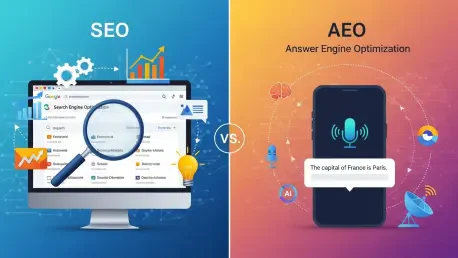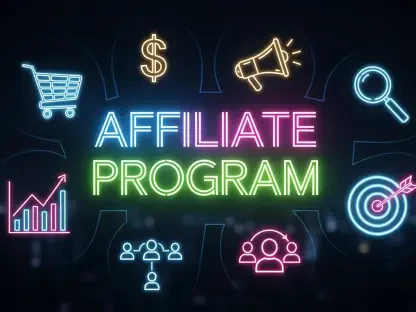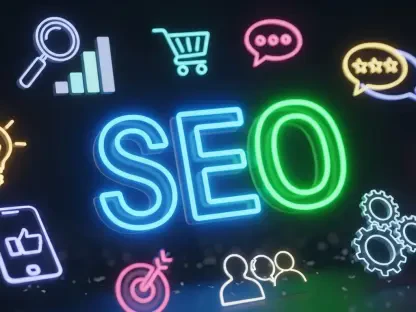Imagine a digital landscape where a single query can yield not just a list of links, but a concise, AI-generated answer that directly addresses the user’s intent, bypassing traditional search results, and reshaping how we interact with information online. This scenario is no longer a distant vision but a present reality, as search engines evolve with artificial intelligence at their core. The competition for online visibility now hinges on two pivotal strategies: Search Engine Optimization (SEO) and Answer Engine Optimization (AEO). This comparison delves into these two approaches, exploring their foundations, differences, similarities, and challenges. By dissecting how each adapts to the shifting tides of user behavior and technology, a clearer picture emerges of how businesses and content creators can maintain relevance in an increasingly conversational digital world.
Understanding SEO and AEO: Foundations and Relevance
SEO has long been the cornerstone of digital visibility, originating in the late 1990s as a method to optimize websites for better ranking on search engine results pages (SERPs). Its primary purpose is to enhance discoverability through techniques like keyword integration, link building, and technical site improvements, ensuring content aligns with search engine algorithms. The focus remains on climbing the ranks of traditional search results to capture user clicks and drive traffic to specific pages.
In contrast, AEO is a newer concept, emerging with the rise of AI-driven tools that prioritize direct responses over ranked lists. AEO aims to position content as a credible source for AI systems to cite in summarized answers, often seen in features like Google’s AI Overviews or conversational platforms like ChatGPT. Unlike SEO’s broad ranking goal, AEO targets precise visibility within these automated, answer-focused outputs, catering to users seeking quick, authoritative information without navigating multiple links.
The relevance of both strategies cannot be overstated in today’s digital ecosystem. With AI tools becoming integral to how information is accessed, adapting to both traditional and conversational search formats is essential. SEO ensures a strong foundation for organic reach, while AEO addresses the growing demand for instant, reliable answers, reflecting a shift in how users interact with technology. Together, they shape the strategies needed to thrive amidst rapid technological advancements.
Key Differences and Similarities Between SEO and AEO
Core Objective: Ranking vs. Citability
At its heart, SEO is driven by the objective of securing high positions on SERPs, where visibility translates to clicks and traffic. The emphasis lies on outperforming competitors through optimized content and technical prowess, ensuring a website appears among the top results for relevant queries. For instance, a well-optimized page might dominate Google’s traditional list of links for a specific keyword, drawing steady user engagement.
AEO, on the other hand, shifts the goalpost toward citability, focusing on being referenced as a trusted source in AI-generated responses. Rather than competing for a spot in a ranked list, the aim is to have content directly quoted or summarized in tools like AI Overviews, where a single authoritative answer often suffices. This distinction is evident when comparing a traditional Google search result with an AI-generated snippet that pulls directly from a site, prioritizing credibility over mere ranking.
This fundamental difference highlights contrasting priorities: SEO seeks broad exposure through position, while AEO pursues targeted recognition as the go-to answer. Despite this divergence, both ultimately aim to connect with users, albeit through different mechanisms in the search ecosystem.
Content Approach: Keywords vs. User Intent
SEO traditionally hinges on keyword optimization, where content is crafted to match specific search terms users are likely to input. This approach involves meticulous research to identify high-volume phrases and weaving them into articles, titles, and metadata to boost relevance in search algorithms. The strategy often focuses on volume and competition, aiming to capture as many queries as possible within a given niche.
Conversely, AEO places user intent at the forefront, emphasizing content that directly resolves a query with clarity and brevity. Instead of chasing keywords, the focus shifts to formats like FAQs, how-to guides, and concise summaries that AI systems can easily parse and present as answers. This means crafting material that anticipates nuanced questions and provides actionable insights without extraneous detail, aligning with conversational search patterns.
While SEO might prioritize density and variation of terms to cover multiple search scenarios, AEO hones in on depth and precision to satisfy specific needs. This contrast underscores a broader evolution in search behavior, where intent-driven content increasingly gains traction over purely keyword-centric material, reflecting changing user expectations.
Technical Foundation: Shared Importance of Structure and Authority
Despite their differences, SEO and AEO converge on the importance of technical foundations such as structured data and website authority. For SEO, elements like schema markup, fast loading times, and mobile-friendliness are critical to signal relevance and usability to search engines. These factors ensure content is accessible and appealing, bolstering chances of higher rankings.
AEO similarly relies on these technical aspects, as AI systems depend on well-organized data to interpret and cite content accurately. Structured formats help delineate relationships within information, making it easier for algorithms to extract key points for summarized responses. Moreover, authority—built through quality content and credible backlinks—remains a shared pillar, as both search engines and answer engines favor trusted sources.
This overlap illustrates a symbiotic relationship, where SEO fundamentals lay the groundwork for AEO success. Neglecting technical optimization or authority-building undermines visibility in both traditional and AI-driven contexts, emphasizing that a strong digital presence requires integrating core practices from each approach.
Challenges and Limitations in Implementing SEO and AEO
Navigating the complexities of SEO often involves grappling with frequent algorithm updates that can shift rankings overnight. Content creators face intense competition, as countless entities vie for top spots on SERPs, requiring constant adaptation to maintain visibility. This dynamic environment demands significant resources and expertise to stay ahead of evolving standards and rival strategies.
AEO presents its own set of hurdles, notably the absence of standardized metrics to gauge success. Unlike SEO, where tools track rankings and traffic, AEO’s focus on citability lacks clear benchmarks, complicating efforts to measure impact. Additionally, optimizing across multiple AI platforms, each with unique citation patterns, adds layers of difficulty, as best practices remain fluid and under development.
Ethical concerns also surface in both domains, particularly around over-optimization. Manipulating content to appeal excessively to algorithms or AI systems risks misrepresenting information, potentially eroding user trust. Balancing authenticity with strategic optimization is a persistent challenge, as the drive for visibility must align with delivering genuine value to audiences.
Conclusion: Choosing the Right Strategy for Future Success
Reflecting on the detailed comparison, it becomes evident that SEO and AEO are not opposing forces but complementary tools in the quest for digital prominence. Their interplay highlights a shared goal of connecting with users, whether through ranked results or cited answers. Moving forward, adopting a hybrid strategy proves to be the most effective path, blending SEO’s robust technical base with AEO’s focus on intent-driven content.
A practical next step involves prioritizing structured data and high-quality material to ensure compatibility with both traditional and AI-driven search systems. Content creators are encouraged to delve deeper into user intent, crafting resources that address specific queries with precision. This approach positions them to capture visibility across diverse platforms.
Looking ahead, staying adaptable is critical, as search technologies continue to evolve. Experimenting with formats like detailed guides and question clusters offers a way to test and refine strategies. By focusing on user-centric value over mere optimization tricks, businesses can build lasting authority, ensuring resilience in an ever-changing digital landscape.









